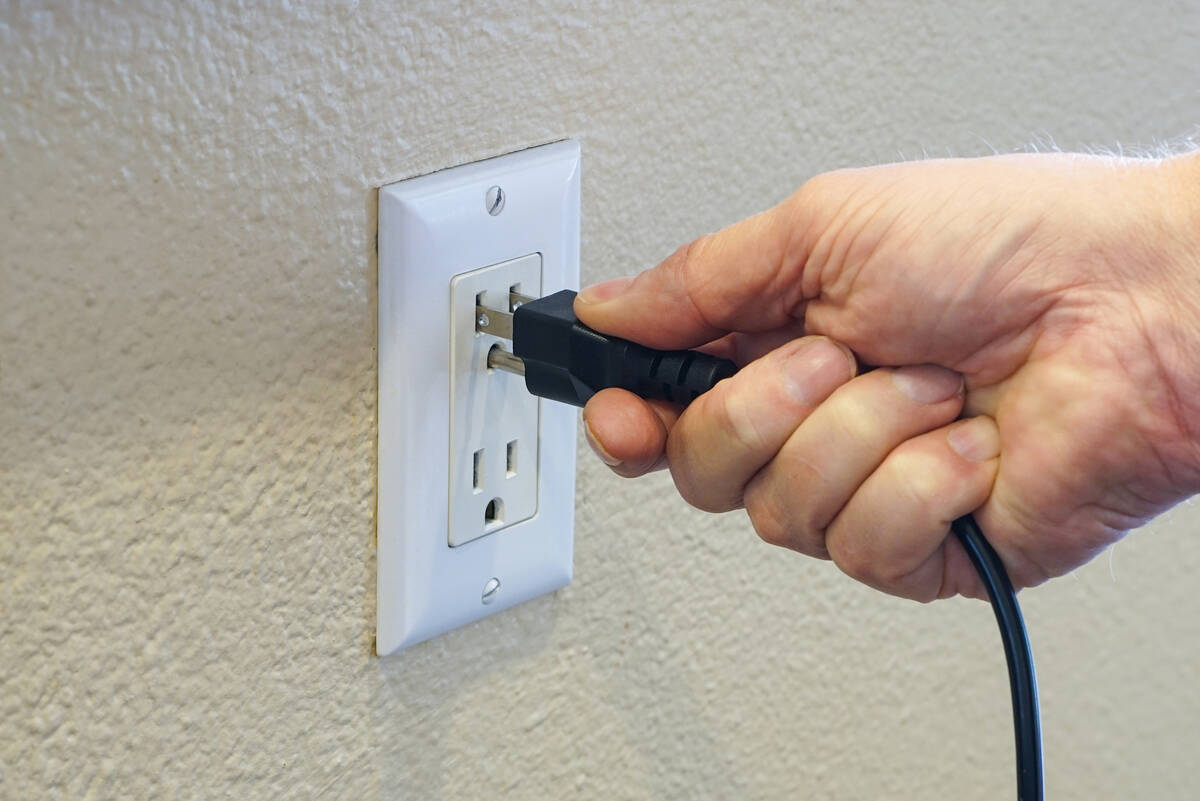Can I use existing electrical outlet to power a new one?
Q: I want to install an additional electrical outlet in my bedroom. On the other side of the wall is another outlet in about the same place as where I want to add the new one. Can I tap into the existing outlet to power the new one?
A: Yes, and it will simplify the job because you won’t have to bore through studs to run the cable.
The simplest installation involves cutting a hole in the wall where you want the new outlet, tapping into the existing outlet for power, running the cable to the new outlet, and then making the connection to the new outlet. If you don’t place the new outlet between the same two studs as the existing outlet, this project will be more difficult.
Expect to pay about $45 for parts and plan to spend about an hour on this job.
First, you’ll need to determine if the existing outlet is suitable to supply power to the new outlet. To do so, make sure the existing outlet isn’t on a circuit that frequently trips its breaker. And follow the general rule: A 15-amp circuit shouldn’t have more than eight outlets or lights. Also, check that the box of the existing outlet is large enough to handle the extra wiring that it will hold — for a 15-amp circuit, use 14-gauge wire in an 18-cubic-inch box.
Once you determine that you can use the existing outlet, cut a hole for the new outlet. Use a stud finder to locate the studs on either side of the existing outlet. It’s inside this cavity that you’ll place the new outlet. However, you can’t put it directly behind the old outlet because there won’t be enough room. The 18-cubic-inch electrical boxes are about 3 inches deep, so if you tried mounting one directly behind the other, they wouldn’t fit.
Instead, move the new box over toward the opposite stud and install it. Measure the distance from the floor to the bottom of one of the other boxes in the room so that the outlet will be at the same level. Buy a remodeling box for your new outlet, then place the box against the wall and trace the outline on the wall. Shut off the power to the circuit at the main panel and use a drywall saw (about $15) and cut along the line. Use a shallow stroke because you never know what may be lying beneath the surface of the wall.
Use a screwdriver to punch out a knockout plug at the back of the existing box. Feed a length of 14-gauge NM (non-metallic) cable, commonly referred to as Romex. If you have a 20-amp circuit, you’ll need 12-gauge wire. You can use a metal clothes hanger to fish the wire over to your new outlet hole. Cut the wire so that there’s about 1 foot of wire coming out of the existing box and 1 foot coming out of the new outlet hole. Remove one of the knockout plugs in the new box and run the wire so that it enters the new box through this hole.
The remodeling box has tabs on it that keep it flush to the wall. It’s held in place by arms that rise out of the sides of the box. As you turn the screws on the front of the box, the arms rise and put pressure against the wall, keeping the box in place.
At the existing box, strip 10 inches of the plastic sheathing away so that you have 10 inches of black, white and copper wires. The sheathing should extend 2 inches into the box. Strip one-half inch of insulation from the ends of the wires and connect them — black to black, white to white and ground to ground — using a wire nut.
At the new outlet, again strip the sheathing from the wires, being careful not to damage the insulation on them. Strip one-half inch of insulation from the ends of the wires and connect the copper wire to the green ground screw on the new outlet. Connect the white neutral wire to the silver terminal, then connect the black hot wire to the brass terminal on the outlet.
Secure the outlet to the box with the two screws on the top and bottom of the outlet, then attach the cover. Flip the breaker back on and you’re ready to go.
Mike Klimek is a licensed contractor and owner of Las Vegas Handyman. Send questions to handymanoflasvegas@msn.com or 4710 W. Dewey Drive, No. 100, Las Vegas, NV 89118. Visit handymanoflasvegas.com.
Do it yourself
Project: Adding an electrical outlet
Cost: Around $45
Time: 60-90 minutes
Difficulty: ★★★























